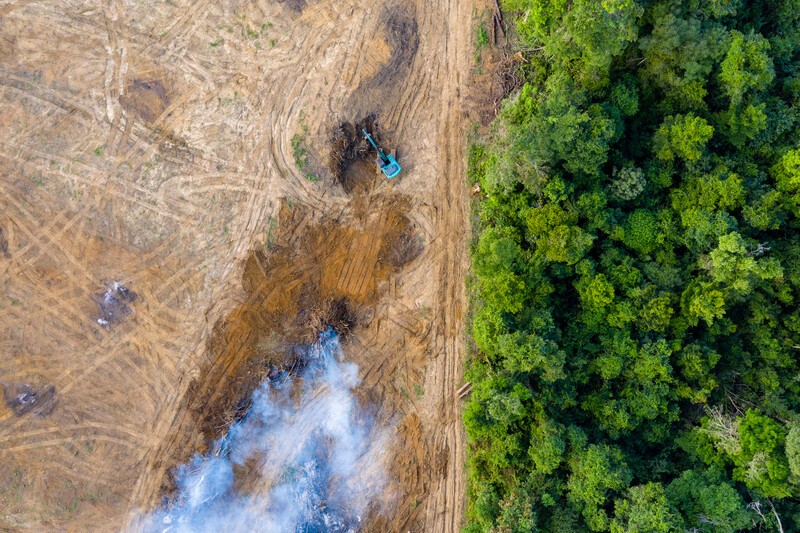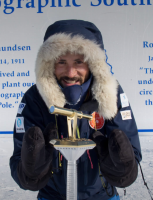Agriculture in Brazil: how land-use choices affect biodiversity and the global climate Floor van der Hilst , Judith A. Verstegen , Thomas M. R. Gérard

How can land-use decisions shape Brazil’s future - both environmentally and economically?
In an article for The Conversation, Associate Professor Floor Van Der Hilst from Utrecht University, AXA IM Climate Transition Award 2021, along with Associate Professor Judith A. Verstegen and PhD Candidate Thomas M.R. Gerard provide valuable insights into land-use dynamics and their environmental impacts. They examine how future land-use in Brazil, shaped by different global scenarios, could influence biodiversity, climate, and the economy, highlighting the importance of strategic decisions in balancing agricultural development with ecological preservation.
Source : Agriculture in Brazil: how land-use choices affect biodiversity and the global climate (The Conversation, published on November 06, 2025)
Over the past 50 years, Brazil has emerged as one of the world’s agricultural giants. Becoming a leading global exporter of soybeans, beef, coffee and sugar has significantly boosted its economy and placed the country at the centre of the global food system. This agricultural development, however, has come at a cost.
The expansion of agriculture has driven the widespread conversion of natural vegetation into pastures, croplands, and forest plantations. Much of this expansion has occurred in areas that are critical for biodiversity conservation and terrestrial carbon storage. In the past 40 years alone, agricultural land has expanded by approximately 109 million hectares, an area nearly twice the size of metropolitan France. Brazil includes some of the world’s most important biodiversity hotspots. At the same time, its ecosystems are critical carbon sinks, storing vast amounts of carbon that are essential for mitigating climate change. The continuing pressure from agricultural expansion underscores the urgent need to reconcile production with biodiversity conservation and carbon sequestration.
Our new study explores how future changes in land use in Brazil could affect biodiversity, the global climate, and the agricultural economy by 2050. We consider two Shared Socioeconomic Pathways (SSPs), each outlining a distinct potential future for the world and Brazil. Among these, SSP3 depicts a scenario characterised by regional rivalry, heavy reliance on fossil fuels, strong nationalism, and significant challenges to both climate mitigation and adaptation. Under this scenario, agricultural land in Brazil is expected to expand further due to rising food demand and only modest improvements in crop yields. In contrast, SSP1 represents a sustainable future, emphasising proactive climate mitigation and adaptation, clean energy adoption, and the protection of natural ecosystems. Under SSP1, agricultural land in Brazil is projected to contract, thanks to reduced food demand and substantial yield improvements.
Where agriculture expands matters
Under the SSP3 scenario, around 52 million hectares of natural land are converted for agricultural use to meet rising food demand, affecting all of Brazil’s biomes, regions that encompass large ecosystems with similar climatic or ecological conditions and a specific type of vegetation. This expansion drives a projected 28% increase in agricultural revenue between 2025 and 2050, but it comes with significant environmental trade-offs. The loss of natural vegetation is expected to release a total of 12 gigatonnes of CO2 over this period. On average, this would result in 0.5 gigatonnes per year, which is higher than Brazil’s annual emission rate from land use during the 2010s. Biodiversity would also be affected, with about 70% of the mammal species we studied, including the maned wolf and howler monkey, losing habitat over the same period.
Our results show that the environmental impacts depend not only on the extent of agricultural expansion, but also on where it takes place. Deforestation should be avoided in the Amazon and Atlantic Forest, as both biomes are rich in carbon and biodiversity, and clearing them has a major impact on both. In these biomes, whether deforestation occurs at forest edge or deep within the interior, it releases substantial amounts of CO2. For biodiversity, however, location is decisive: deforestation within highly biodiverse areas (including Indigenous Lands and Conservation Units, officially designated areas in Brazil that receive legal protection) disproportionately threatens species with restricted habitats. For instance, Saguinus bicolor, a primate species with one of the smallest habitats in the Amazon, is projected to lose more than 7% of its remaining range, further constricting an area that is already limited.
Restoration of ecosystems with low economic loss
Under the SSP1 scenario, declining food demand is projected to lead to the abandonment of agricultural land, freeing vast areas for restoration to their natural state. Between 2025 and 2050, revenue from agriculture is projected to fall by 31%, but this comes with positive environmental trade-offs. More than 12.4 gigatonnes of additional CO2 – roughly five years’ worth of EU emissions from fossil fuels and industry – are expected to be sequestered, a major contribution to climate change mitigation. In addition, the habitats of two thirds of the mammal species we studied are projected to expand.
Interestingly, these results indicate that restoring land around remaining biodiversity- and carbon-rich areas could deliver substantial environmental benefits with relatively modest agro-economic losses. In these areas, restoration would result in an agricultural revenue loss of only $5 to $10 per tonne of carbon gained. By comparison, the European Union Emissions Trading System currently prices carbon at around $70 per tonne, suggesting that strategic reforestation in Brazil could be a highly cost-effective climate change mitigation strategy. This is particularly relevant, as Brazil has recently launched its own Greenhouse Gas Emissions Trading System (SBCE). In addition to increasing carbon sequestration, reforesting these areas would generate substantial co-benefits for biodiversity, creating a synergistic opportunity to advance both.
Lesson learned for a more sustainable future
Reconciling agriculture with biodiversity and climate is critical in Brazil’s sustainable transition. Future global developments in food demand and agricultural yields will determine how much land the country dedicates to agriculture, and, by extension, how much pressure is on its ecosystems. The more land required for production, the greater the impacts on biodiversity and carbon storage.
If expansion is unavoidable, several strategies can help reduce the environmental consequences. Agricultural expansion should be carefully planned, avoiding carbon- and biodiversity-rich areas, and should not include deforestation deep within forests. At the same time, restoration efforts focused on biodiversity- and carbon-rich areas can deliver substantial environmental benefits at a relatively low economic cost.
Brazil’s path toward sustainable land use ultimately depends on two essential questions: how much land is required, and which land should be used.


